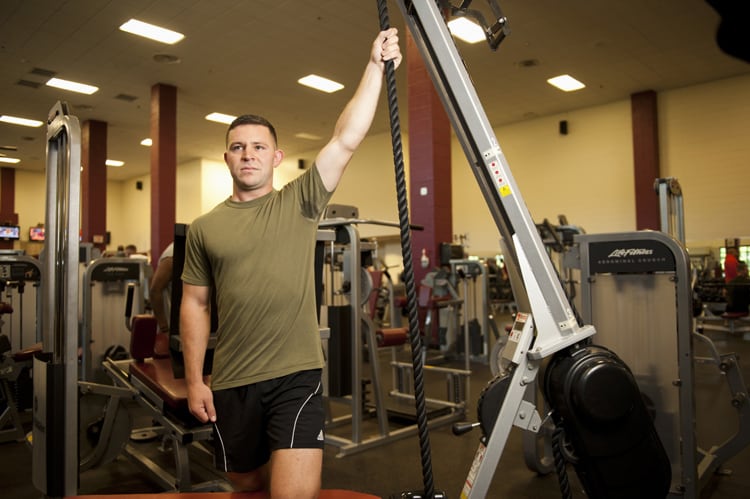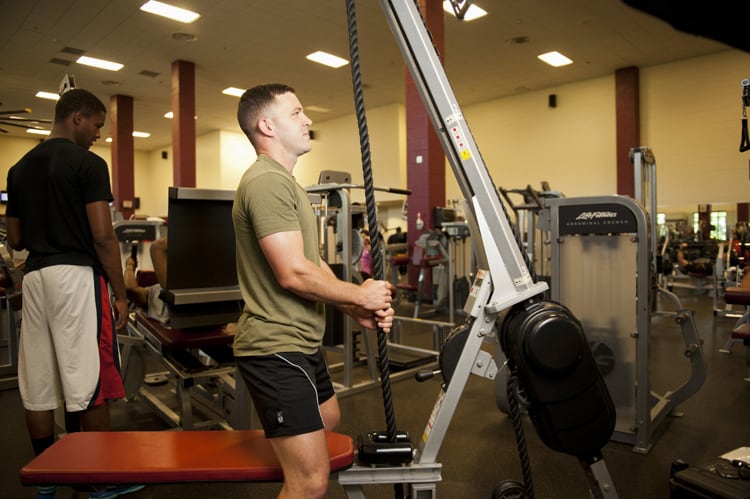We've all heard the stories about some visionary who sketches an idea for an industry-leading company on a napkin (the birth of Southwest Airlines) or builds the prototype of a worldwide product in a garage (Walt and Roy Disney; Bill Hewlett and David Packard).
Likewise, in 2006, Marius Popescu, an engineer and elite-level Judo athlete, used his garage to develop the first functional prototype of his rope trainer. Eight years later, these rope trainers are produced in three versions and used in fitness centers across the country.
We liked them enough that we bought a rope trainer for each of the four fitness centers here on our naval air station. As long as the client doesn't have shoulder issues, I use our rope trainer (we have the VLT) in almost all of my fitness programs, including for clients in their 70s and 80s.
All three machines have bi-directional rope-pulling capability, a dynamic resistance range of one to 200 pounds, and an electronic display that shows distance, time, speed and calories. The three basic machine designs:
The V250 seat rises as the individual pulls, simulating actual rope climbing. The seat may be removed for standing exercises as well as allowing for wheelchairs. ($4,150 GSA)
The VMX incorporates an adjustable sliding carriage that allows the user to adjust rope height as well as pull directions. The seat does not rise, nor is it removable. ($4,430 GSA)
The VLT is a more compact and lightweight model — good for places with ceiling-height restrictions — that also has a releasable seat. ($2,700 GSA)
This is a no-nonsense fitness machine. You're constantly pulling against resistance, so it quickly elevates your heart rate. You can target cardio, strength, endurance and power all in one machine.
What follows can be executed on all three Vipers unless noted. If this is your first rodeo with these machines, I suggest setting the resistance level at one or two (there are seven levels). You will be able to quickly determine if you want to raise the resistance or need to work up to it.
1. Vertical rope-pull, top-to-bottom motion
Set the resistance level and program the electronic display for time. When you hit your predetermined time, you can quickly change the display to distance if you want to go that way for the rest of your workout.
Extend your arms overhead and grasp the rope so that one hand is above the other with palms facing each other. Starting with the bottom hand, pull downward. As it gets to mid-chest, release and start to pull with the other hand. Extend the released hand back to the top and repeat the pull. Continue hand over hand with a full-range-of-motion pull for the assigned time. Rest for the same amount of time that you pulled. Repeat a second set. Using a V250 or VLT, you can execute seated or standing.
2. Vertical rope-pull, bottom-to-top motion (not shown)
Reverse what you did in the previous pull.

3. Kneeling lat pull
Set the resistance level. Kneel on the seat so that your body is sideways to the rope (the leg closest to the rope is kneeling, and your opposite foot is on the floor). Your back is neutral.
Using the arm closest to the rope, fully extend downward, grasp the rope, and pull — using one arm — upward for a predetermined time or distance. The pull should focus on using lats and shoulders. Repeat on the other side.

4. Fireman overhead pull (VLT and V250)
Release the seat, and set the resistance level. Face the rope and position feet hip-width apart. Squat to almost 90 degrees, keeping your back straight, and grasp the rope with both hands at knee level.
Lift with your legs, and as you start to straighten, continue the pull with arms and shoulders until fully extended. Keep hands together. Release the rope, reposition at the start point, and repeat for desired repetitions (start at 10) or time.
5. Diagonal or horizontal pull -- (VMX)
(Shown at top) Set the resistance level. Set the sliding carriage so the rope is at 45 or 90 degrees. Grasp the rope and stand behind the bench. Using a hand-over-hand motion, pull the rope toward you for the desired time or distance.





